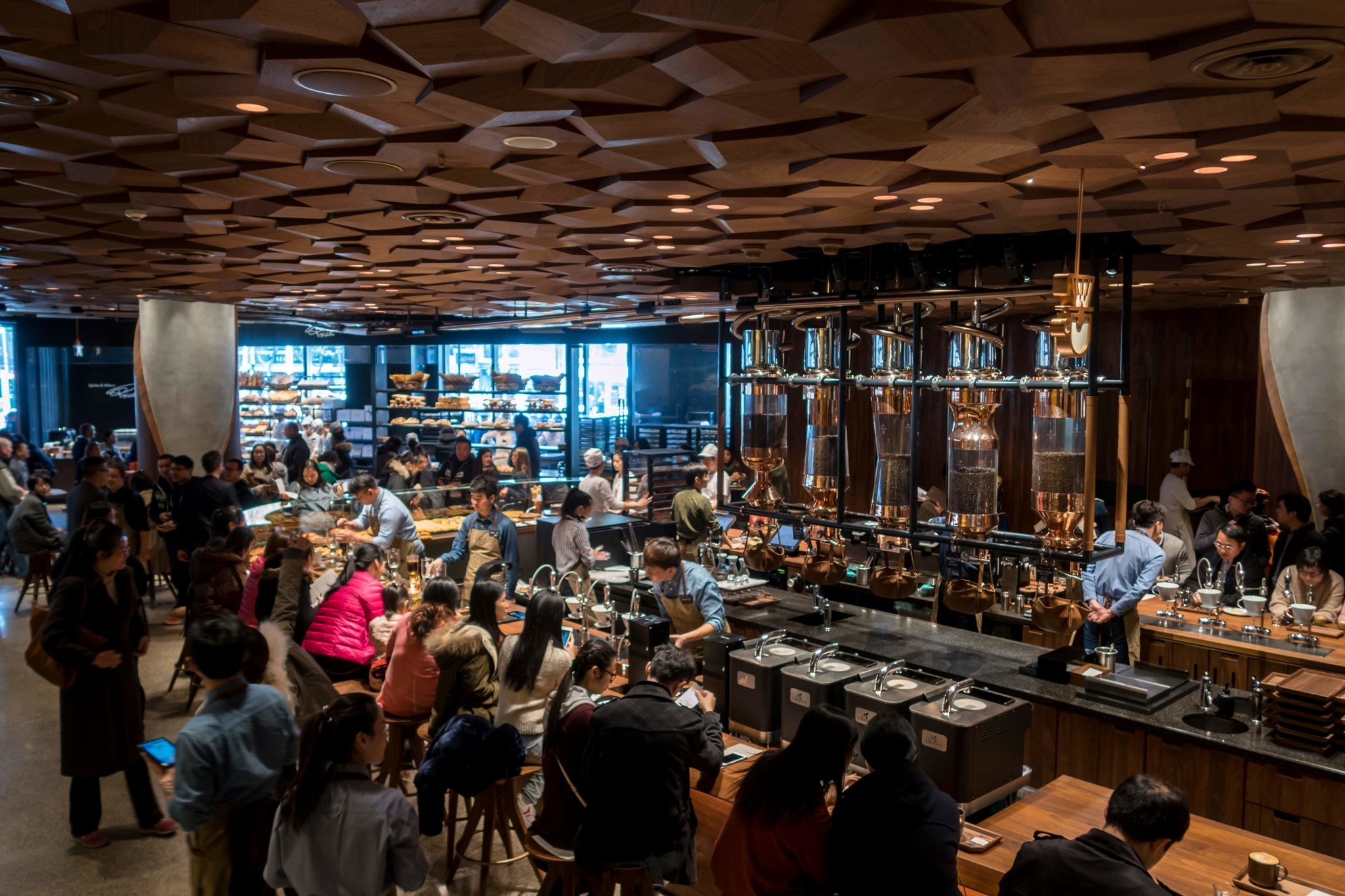 Source: The New York Times
Source: The New York Times 谁说中国人不爱排队?
- 2017年12月6日,全球最大的星巴克门市(面积超过三万平方英尺)于上海南京西路地铁站对面开业了。到目前为止,为了体验世界第二家星巴克大型咖啡烘焙工坊 (Starbucks Reserve Roastery), 大家仍然愿意在队伍中等待很长时间。据保安透露,人均消费大概300元。像今天周五,开业四个星期之后,无论上海冬天多么寒冷,大家仍愿意排90分钟的队,原因何在呢?
Who says Chinese people don’t like to wait in line?
- On December 6th, 2017, the world’s largest Starbucks (over 30,000 square feet) opened in a gigantic building across the street from the Nanjing West Road subway station. Even a month later in 2018, Chinese people are willing to stand in long lines in order to experience these large-scale stores they call “Starbucks Reserve Roasteries” (this is the second after the one that opened in Seattle earlier this year). According to the security guards who manage the queue, the average customer spends about $45 there in one sitting. Even today, on a Friday, four weeks after opening, and despite the frigid winter weather, people are willing to wait in 90-minute lines. Why could this be?
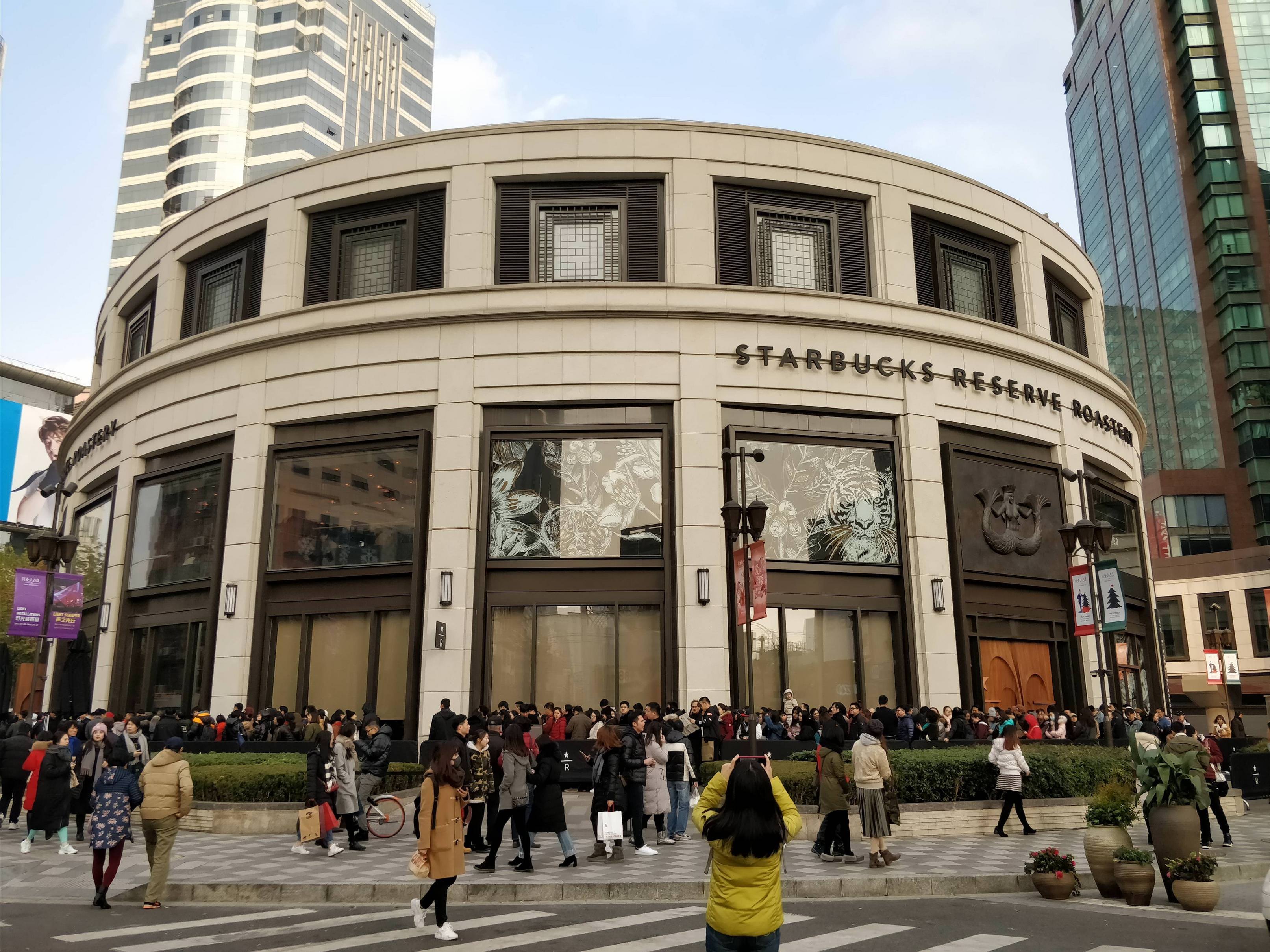 On a chilly Friday, a long line snakes around the Roastery //周五早上,络绎不绝的人围绕着在星巴克门口
On a chilly Friday, a long line snakes around the Roastery //周五早上,络绎不绝的人围绕着在星巴克门口 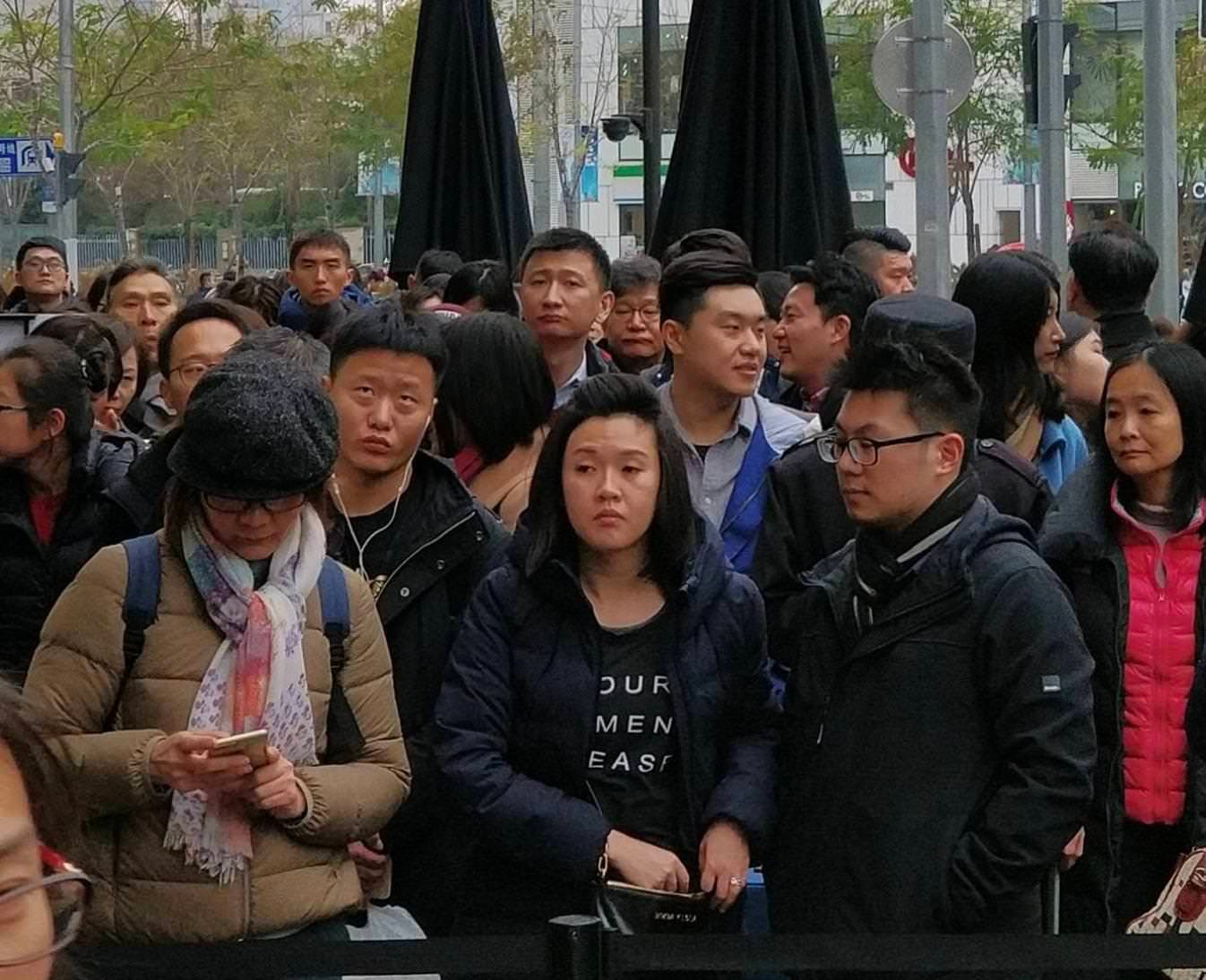 This guy can hardly contain his excitement //这个老铁一副生无可恋的表情
This guy can hardly contain his excitement //这个老铁一副生无可恋的表情 首先,经常喝咖啡的中国人越来越多。很多人以为中国只有茶文化,而没有咖啡文化,其实不然。如同韩国和日本,中国渐渐地受到西方咖啡文化的影响。按照2012年的调查,韩国人在80%的情况下会选择喝咖啡,而不是茶,但中国人在99%的情况下都会选择喝茶。但是自2012年以来,中国的咖啡消费已涨了4倍。尽管中国的星巴克和美国的对比,中国星巴克咖啡的价格约为美国的3倍。在亚洲,咖啡文化跟社会地位有关系,甚至于有些人为了面子饿肚子,省钱,也要买星巴克。在韩国,表现出这种行为的女生叫做“大豆酱女生”;虽然没有钱,她们为了买贵的东西她们只会吃廉价的食物。当然,“大豆酱女生” 这个词包含很明显的性别歧视,但是也反映了韩国的社会现象。你们认为这种人也存在于中国吗?
One reason is that Chinese people are drinking more and more coffee. Many people assume that China only has a strong tea culture. In fact, just like South Korea or Japan, China is beginning to be influenced by Western coffee culture. According to a 2012 study, South Koreans would pick coffee over tea 80% of the time, whereas the Chinese drank tea 99% of the time. But in the years since 2012, coffee consumption in China has already quadrupled, despite the fact that a cup of Starbucks in China can be 3 times the equivalent cup in the US. In Asia, coffee culture and social status are deeply tied together, to the point that some people will even starve themselves in order to afford Starbucks and earn social credit. In Korea, women who engage in this behavior are called “Bean paste girls” or “Doenjang girls;” they commit to each cheap bean paste soups so that they can afford luxuries and show-off on social media. Of course, the term “Doenjang girl” is sexist in nature (which was the satirical main theme behind Psy’s “Gangnam Style”), but it does reflect a real cultural phenomenon in Korea. Do you think these people also exist in China?
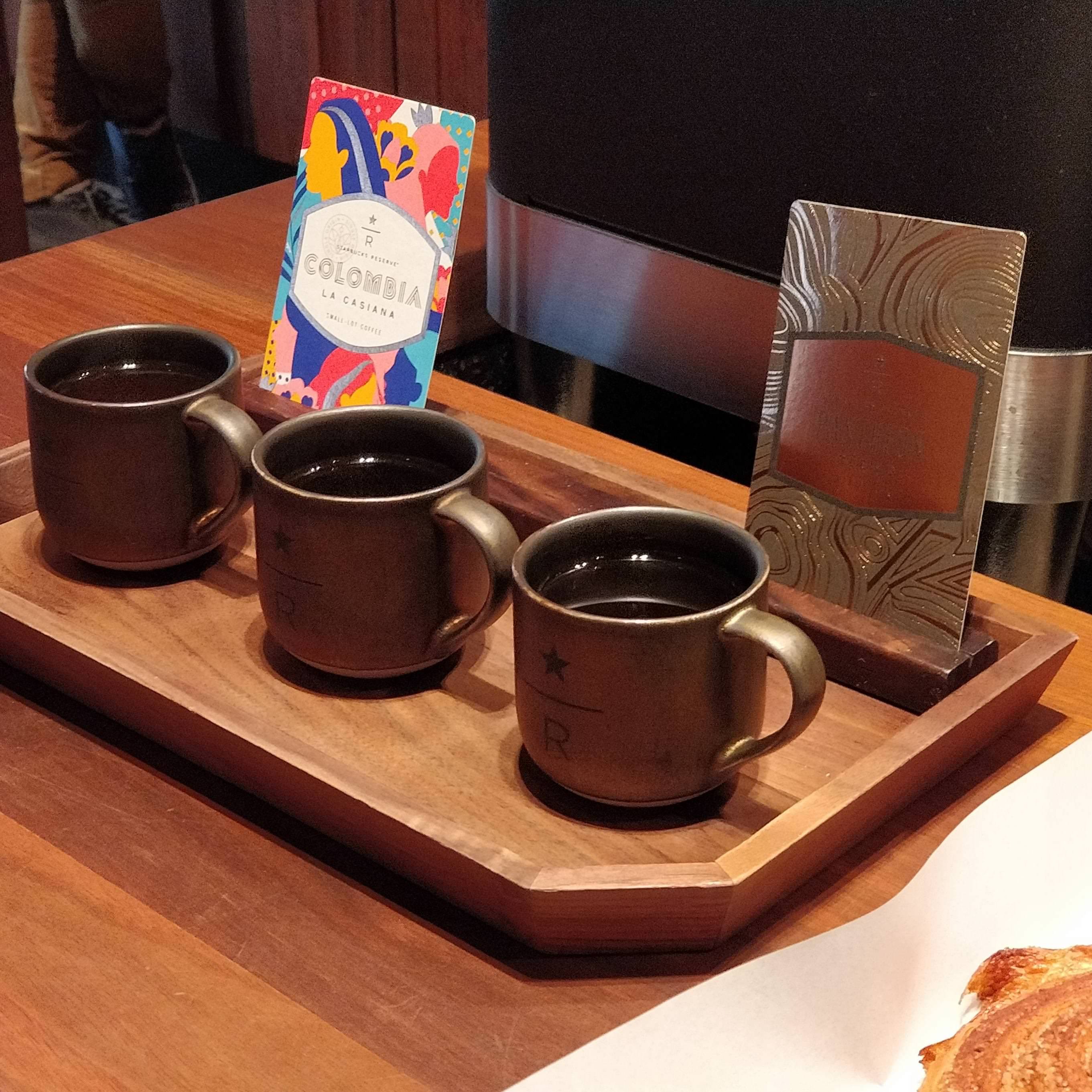 This tasting flight = $16 USD //此品尝flight = 108元
This tasting flight = $16 USD //此品尝flight = 108元 其次,除了咖啡本身之外,中国人好像乐意排队。说实话,有些外国人以为典型中国人不知道怎么排队,因为中国人不喜欢遵守秩序。然而这个偏见与我在上海所观察的不一致。无论是在餐厅、买运动鞋、或买奶茶时,在表面上,很多亚洲人很有耐心排队,一个原因也许是集体主义。如果看到很多人在排队,自动以为这家店的商品良好,也会马上加入。如果大家都在门店里拍照片发朋友圈,周边的人也想体验,并且自己也要炫耀一下他们的生活有多么充实。地位及面子是中国社会里两个重要的概念。星巴克提供的经历不仅是“精彩”的咖啡,也是得到精彩生活的廉价方法。
Another reason is that besides coffee, Chinese people seem to actually enjoy long lines. Foreigners sometimes assume that Chinese people don’t understand queuing culture, because they sometimes witness Chinese people who don’t follow these type of social rules. This is a type of stereotype that I have not observed in Shanghai. Whether it’s restaurants, sneakers, or milk tea, people will wait patiently in line for these things. A possible framework to understand this is collectivism. If a person sees many people in a line, they might automatically assume that the product is good, and they’ll join the line immediately. If everyone is taking pictures at a store and sharing them on social media, then the people in their circles won’t want to miss out, and they will also want to show off how luxurious their lifestyles are. Social status and “face” are two very important concepts in Chinese society. What Starbucks offers to consumers is not just good coffee, but also enables them to experience a luxurious lifestyle at a relatively affordable price.
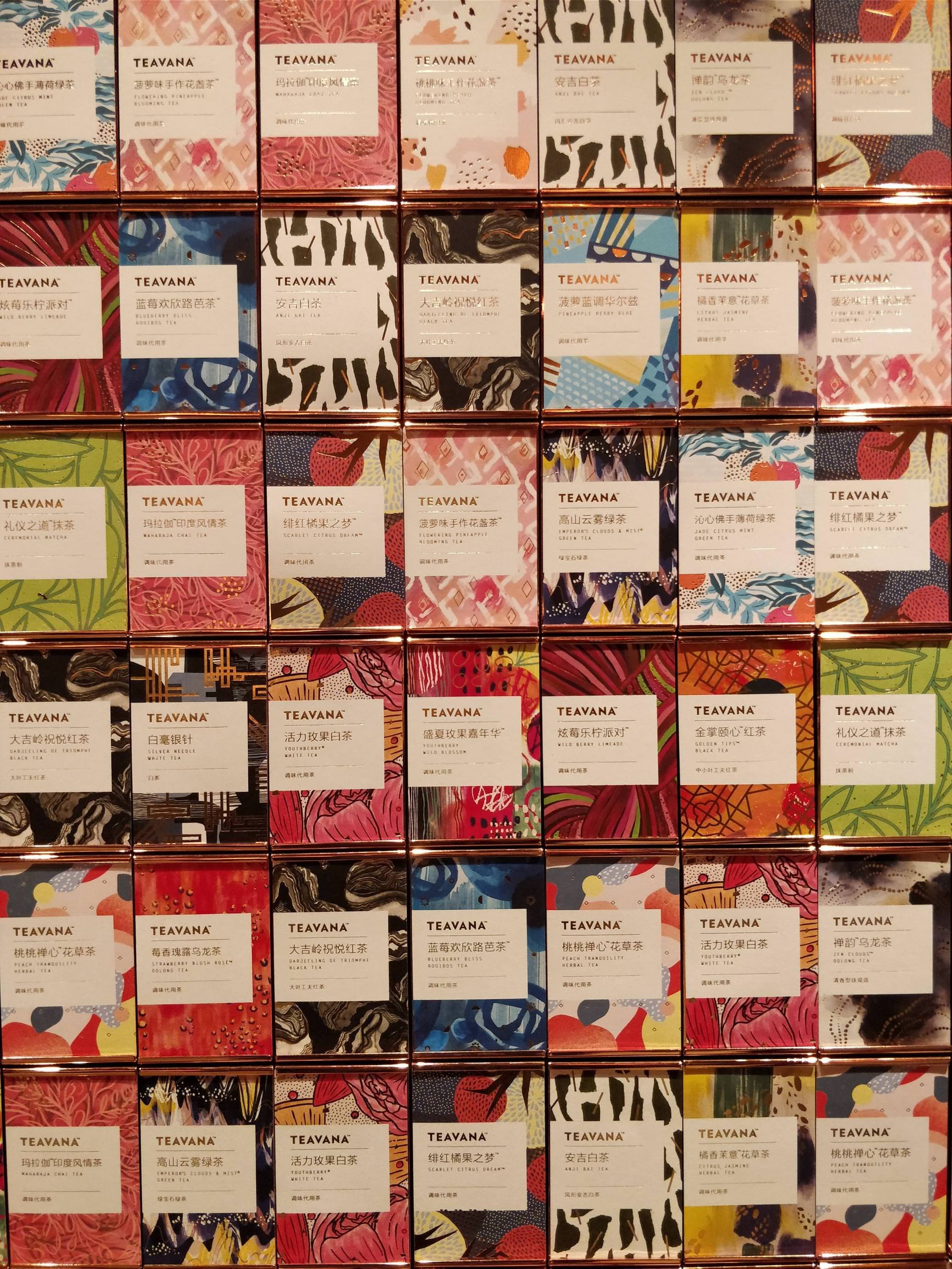 They also sell a range of beautiful blended teas // 星巴克也会卖的茶也很丰富
They also sell a range of beautiful blended teas // 星巴克也会卖的茶也很丰富*最后,星巴克的烘培工坊设计得了不起。客人看得到咖啡豆的烘培,听得到大型机器的声音,闻得到现烤的糕点。这家星巴克的糕点来自于意大利最著名的糕点店Princi。一个很有趣的矛盾点:虽然中国人为了体验Princi糕点要在外面耐心等待,意大利人可能会批评中国人不排队,但位于意大利Princi店里的客人会拥挤地到前台去点东西(没所谓的“排队” “there’s no ‘line’ as such”)

Mixing beans in-store // 店里混合咖啡豆
- Finally, the Starbucks Reserve Roasteries are designed impeccably. Customers can see artisans roasting the beans, can hear large machines whirring, and smell freshly-baked pastries. The pastries are actually from a very famous Italian bakery called Princi, and the only stores they have outside of Italy are in these Reserve Roasteries. I found an interesting contradiction here: while some Italians might criticize stereotypical Chinese people for not respecting queuing culture, Chinese customers will in reality wait for hours in the cold weather to purchase these expensive pastries... whereas in the Prince stores in Italy, you’ll find Italians jostling at the counter to inspect the freshly baked goods (“there’s no ‘line’ as such”)
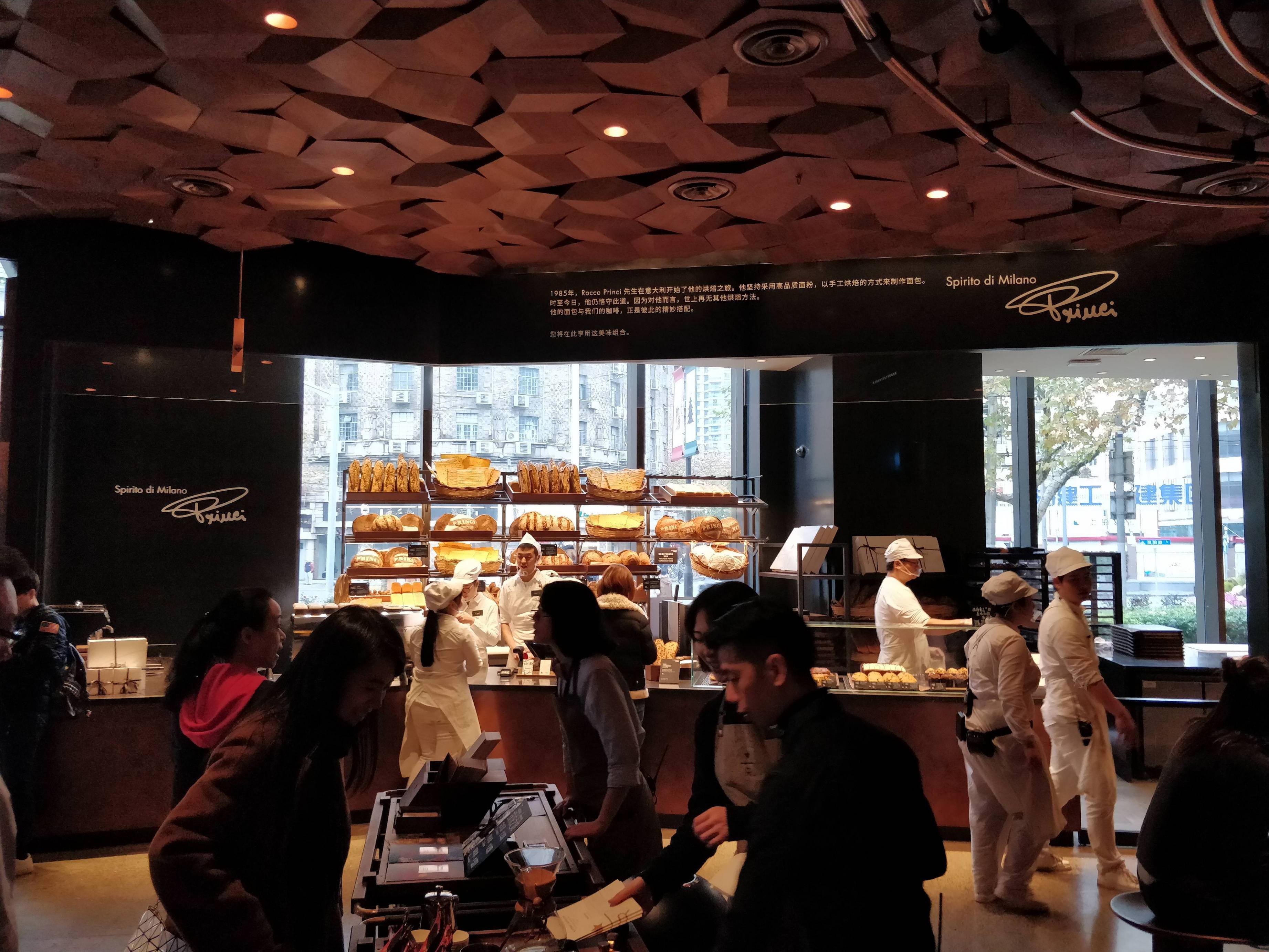 Princi Pasteries // Princi糕点
Princi Pasteries // Princi糕点 这个事实可能会让不少的老外感觉意料之外 😁 欢迎大家来上海体验一下星巴克新开的烘培房,也体验一下中国人排起队来多有耐心!
That might come as a surprise to some foreigners, as queuing culture probably has much less to do with nationality as it does with the social context and history of a place. In any case, I encourage anyone visiting Shanghai to experience this Reserve Roastery; come early to avoid the long lines :)
地址: 上海市静安区南京西路789号,靠近吴江路 (南京西路地铁站11号出口)
Address: 789 Nanjing West Road (near Wujiang Road, across from Exit 11 of Nanjing West Road metro station), Jing’an District, Shanghai

